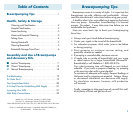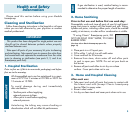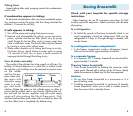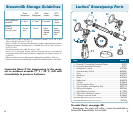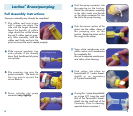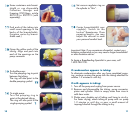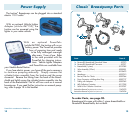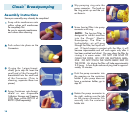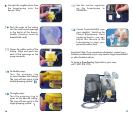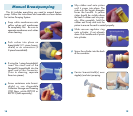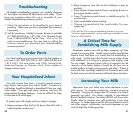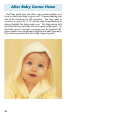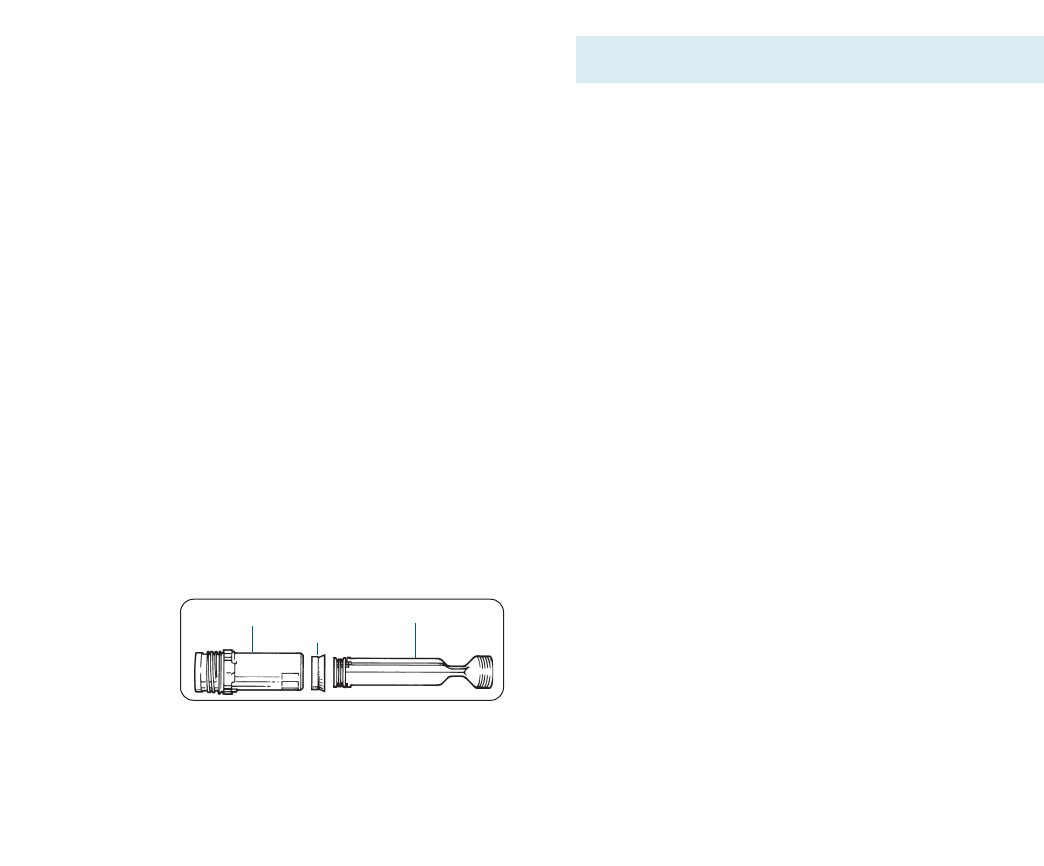
Check with your hospital for specific storage
instructions.
When freezing, do not fill containers more than 3/4 full
to allow space for expansion. Label containers with the date
of pumping.
In a refrigerator:
• To inhibit the growth of bacteria, breastmilk which is not
used immediately should be refrigerated. Milk can be
refrigerated 5-7 days or, if longer storage is needed, milk
can be frozen.
In a refrigerator freezer compartment:
• In the freezer compartment inside a refrigerator, breast-
milk can be stored for approximately six months.
In a separate freezer:
• In a separate -20° C freezer, breastmilk can be stored for
approximately 12 months.
Thawing frozen breastmilk:
• Thaw frozen breastmilk by holding the container under
warm water. Thawed milk is safe to use for 24 hours. Gently
shake the container to blend any fat that has separated.
Caution:
• Do not thaw frozen breastmilk in a microwave or in a
pan of boiling water.
• If adding expressed breastmilk to container of already
frozen breastmilk, make sure to add a smaller amount
than the amount that is already frozen.
Storing Breastmilk
Tubing Care:
Inspect tubing after each pumping session for condensation
and or milk.
If condensation appears in tubing:
To eliminate condensation after you have completed pump-
ing, continue running the pump with the tubing attached for
another 1-2 minutes or until dry.
If milk appears in tubing:
1. Turn off the pump and unplug from power source.
2. Remove and disassemble the tubing, pump connector,
piston, cylinder and barrier filter (parts vary by pump
used). Except for barrier filter, wash in soapy water then
rinse in cold clear water. The barrier filter may be cleaned
by rinsing in warm water without soap.
3. Shake water droplets out of tubing and hang to air-dry.
For faster drying, attach tubing to pump and run pump
1-2 minutes or until dry, or pour a small amount of
isopropyl alcohol through the tubing to dry.
Care of piston assembly
The inside of the cylinder has to be smooth at all times. If a
buildup of mineral deposits or a white film is evident inside
the cylinder, such buildups must be removed to prevent wear
on the rubber
seal. For this pur-
pose, clean cylin-
der again with
lukewarm soapy
water or a vine-
gar and water
solution. Rotate the piston in the cylinder every so often to
ensure that the rubber seal is worn evenly. Washing the rub-
ber seal and the vacuum regulator ring with warm soapy
water will also prolong the life of these parts. Only
sterilize/sanitize these parts when milk is evident on them. Be
sure the rubber seal is completely dry before using.
Cylinder Rubber Piston
Seal
4 5




